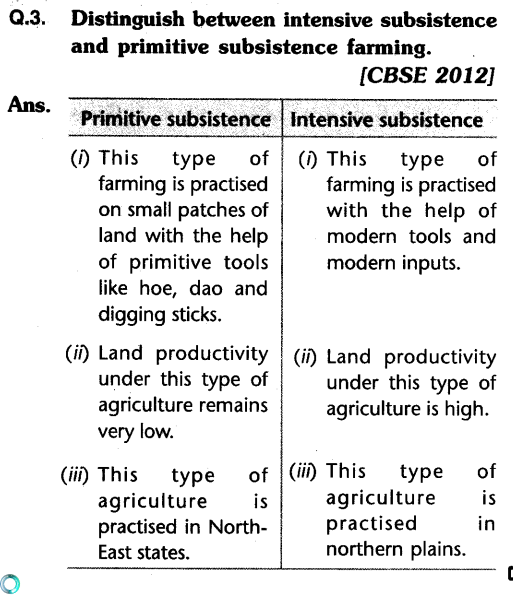Benefits and Difficulties of Commercial Farming vs Subsistence Farming Discussed
Benefits and Difficulties of Commercial Farming vs Subsistence Farming Discussed
Blog Article
A Comprehensive Consider the Challenges and Benefits of Modern Agriculture
Modern agriculture stands at the crossroads of technology and sustainability, providing a multitude of chances and difficulties. With improvements like precision farming and biotechnology promising improved efficiency, the market all at once comes to grips with crucial issues such as ecological degradation and socio-economic disparities. As we discover the detailed equilibrium in between technological progression and its broader effects, the question develops: can we attain a lasting future that benefits both the atmosphere and farming communities? The path onward requires a careful assessment of these characteristics, welcoming stakeholders to consider the possibility for transformative change in farming techniques and plans.
Technological Developments in Farming
Developments such as precision automation, biotechnology, and agriculture have actually changed conventional farming methods, allowing for more lasting and rewarding procedures. Precision agriculture makes use of GPS technology, sensors, and data analytics to optimize field-level administration regarding plant farming.
Automation in farming has better thrust the sector forward, with the intro of self-governing tractors, drones, and robotics. These technologies decrease labor demands and increase functional rate, permitting timely planting and harvesting. Drones, in specific, offer beneficial airborne images and information, assisting farmers in keeping track of plant wellness and detecting issues early.
Biotechnology has actually likewise played a crucial duty in advancing farming methods. Collectively, these technical advancements have actually laid the foundation for a much more resilient and lasting farming future.
Environmental Challenges
Farming faces a number of ecological difficulties that endanger its sustainability and performance. The long-term practicality of farming land is jeopardized, necessitating the fostering of more sustainable methods.
Water deficiency is one more considerable obstacle, specifically in regions where agriculture greatly depends on watering. Climate adjustment is increasing this problem, modifying precipitation patterns and increasing the regularity of droughts. Efficient water administration systems, such as drip irrigation and rain harvesting, are vital to reduce these effects, however their implementation remains unequal throughout different areas.
Moreover, farming is both a victim and a factor to environment modification. Attending to these environmental difficulties is important for making sure a lasting agricultural future.

Economic Influences
The economic impacts of contemporary agriculture are multifaceted and extensive, influencing both neighborhood and global markets. Breakthroughs in modern technology and production techniques have significantly enhanced farming efficiency, leading to more efficient food supply chains and minimized expenses for consumers.
Nonetheless, these benefits are not without obstacles. The capital-intensive nature of contemporary agriculture calls for substantial financial investment in equipment, fertilizers, and genetically changed seeds, which can be economically burdensome for small farmers. This commonly leads to boosted financial obligation and economic vulnerability, possibly causing the loan consolidation of farms and the loss of rural resources. In addition, global market changes can impact Get More Information the success of agricultural exports, making economic climates reliant on farming susceptible to economic instability.
Moreover, aids and trade plans in industrialized countries can distort market value, influencing competitive equilibrium and potentially disadvantaging farmers in developing nations. On the whole, while modern-day agriculture drives financial growth, it likewise demands browsing intricate economic landscapes to guarantee equitable and sustainable advancement.
Social Ramifications
While modern farming has actually produced considerable advancements, it additionally presents various social ramifications that call for factor to consider. One major issue is the displacement of small-scale farmers because of the rise of large agribusinesses. As company farming entities increasingly control the farming landscape, smaller sized farms usually battle to contend, causing the erosion of rural communities and standard farming practices. This shift can result in a loss of local knowledge and cultural heritage that smaller ranches maintain.

Such techniques might likewise restrict customer options and lower the capability of local neighborhoods to regulate their food sources. As these social ramifications unfold, it ends up being critical to resolve them to make certain lasting and fair farming development.
Future Instructions
Looking in advance, several promising opportunities for modern agriculture might deal with the obstacles encountered today while promoting lasting development. Advancements in modern technology, such as precision farming, use the prospective view website to maximize resource usage and boost efficiency. By employing information analytics and equipment knowing, farmers can make enlightened choices concerning crop management, resulting in lowered input expenses and decreased environmental impact. In addition, the assimilation of sustainable energy sources into farming techniques could significantly minimize dependence on nonrenewable fuel sources and add to decrease greenhouse gas discharges.
Biotechnology also holds tremendous pledge for the future of farming. Genetically changed organisms (GMOs) and genetics modifying strategies, go to this web-site like CRISPR, could enhance crop durability against environment adjustment, parasites, and conditions, hence enhancing food protection. Branching out plant ranges to include more climate-resilient and nutrient-dense choices might boost both eco-friendly security and human nourishment.

Conclusion
Modern farming, identified by technological advancements, presents both opportunities and challenges. commercial farming vs subsistence farming. Dealing with these complexities calls for a shift in the direction of sustainable techniques that stabilize productivity with ecological stewardship and social equity, consequently making certain a resilient future for international agricultural systems.
Modern agriculture stands at the crossroads of development and sustainability, providing a wide variety of obstacles and possibilities. Additionally, global market changes can influence the earnings of farming exports, making economic climates reliant on farming prone to financial instability.
Moreover, the intensive use of innovation and automation in agriculture has led to a decline in farming work opportunities.Looking in advance, numerous promising avenues for modern-day farming might address the obstacles faced today while cultivating lasting growth. commercial farming vs subsistence farming.Modern farming, characterized by technical improvements, presents both opportunities and obstacles
Report this page